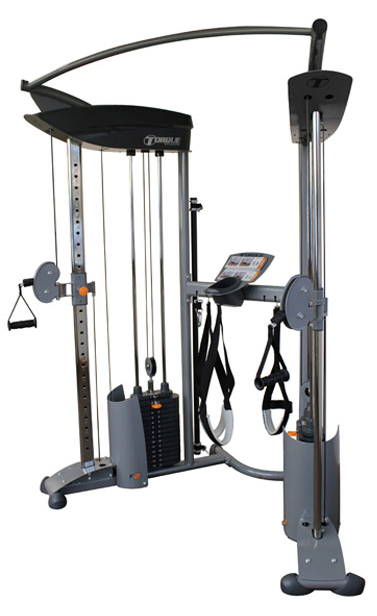18 Nov Functional trainers train people for life

The Torque F2 Functional Trainer features a compact footprint that doesn’t dominate the room, giving you more choices for room placement
Convenient onboard storage for grip handles, leg boot, squat harness, straight bar, universal adapter, workout manual, and water bottle give you all that’s needed to perform countless strength training exercises.
The Mayo Clinic describes functional fitness training as “(D)esigned to train and develop your muscles to make it easier and safer to perform everyday activities, such as carrying groceries or playing a game of basketball with your kids.
“Functional fitness exercises train your muscles to work together and prepare them for daily tasks by simulating common movements you might do at home, at work or in sports,” the Mayo Clinic adds. “While using various muscles in the upper and lower body at the same time, functional fitness exercises also emphasize core stability. For example, a squat is a functional exercise because it trains the muscles used when you rise up and down from a chair or pick up low objects. By training your muscles to work the way they do in everyday tasks, you prepare your body to perform well in a variety of common situations.”
I highly recommend two types of machines to help people achieve those goals: functional trainers and home gyms. Those machines offer great freedom for owners to exercise when they want and to control the workout in the environment of their home.
When many people set out to build a workout room in their homes they’re not sure which is right for them – a home gym machines or functional trainers.
* Functional Trainers have increasingly gained popularity as they are often less expensive than Home Gyms and take up less space. Functional Trainers have weight stacks on their base, too, but the main difference is in the cable systems that come with different shaped handles. They provide more options for working out and because the cable does not have to follow a fixed plane more sports specific routines can be implemented.
For instance, a golfer can hold the cable handle and simulate his or her swing. A baseball or softball player can grip the cable handle and mimic a throwing motion. There are hundreds of different movement possibilities for a Functional Trainer.
You can even incorporate an exercise ball into your workout, sitting on it and pulling the cable handle toward you at a variety of angles.
However, these machines can also be harder to use and some people aren’t sure if they’re following the right motions. It’s important that they ask questions when contemplating buying a Functional Trainer and have correct information on how to use them
* The more traditional Home Gym can enable people to do some functional training and includes one or two weight stacks, with fixed arms and hand grips. It can be bulkier and more expensive than Functional Trainers. Most movements on a Home Gym follow a set plane, such as military press for shoulders, bench press for chest or leg extensions.
Home Gyms are great for beginners as they are generally regarded to be easier to use, but they can also benefit experienced lifters.
They can be a good complement to lifting with free weights because Home Gyms will keep you on a controlled lift and do a good job of isolating specific body parts.
At Home Fitness consultant Aaron Dorksen’s blog deals with a variety of fitness topics, ranging from workout tips, motivational ideas and feature stories on how exercise impacts people’s lives. E-mail him with comments, questions or ideas for future blogs at aaron@athomefitness.com</strong

